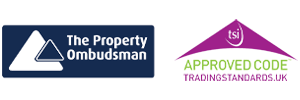How to Apply for a Mortgage: Step-by-Step Guide

- Sep 11th 2025
From securing an Agreement in Principle to receiving your formal mortgage offer, here’s how to navigate the process with confidence. We’ll show you how to prepare properly and improve your chances of lender approval.
Whether you’re a first-time buyer or already on the property ladder, understanding the mortgage application process is essential. From getting your finances in order to receiving your official offer, each step matters.
The steps to getting a mortgage:
- Get your finances ready
- Compare mortgage rates
- Decide the length of your mortgage term
- Agree on an affordable monthly payment
- Apply for a mortgage
- Receive your mortgage offer!
1. Get your finances ready
Before applying for a mortgage, lenders need to be sure your finances are in good shape. Think of it as showing them you’re financially responsible, that you manage money well, and that you can afford the repayments without overstretching.
Ask yourself:
- Do I have a steady income and manageable debts?
- Can I prove where my deposit is coming from?
- Is my credit score healthy?
- Estimate how much you could borrow
Use an online mortgage calculator for a quick idea of what you may be able to borrow, based on your income, deposit and monthly outgoings.
- Speak to a mortgage broker
While optional, a broker can give tailored advice on what you might borrow and which lenders best suit your situation. Some charge a fee if you proceed through them, but their guidance can be invaluable, especially for first-time buyers.
- Clear existing debts
Paying down loans or credit cards improves affordability and makes you more appealing to lenders.
- Check your credit score and report
Your credit score is a key part of any application. Review your report through agencies like Experian, Equifax or TransUnion. Correct any errors or unfamiliar entries by raising a dispute and providing evidence.
If your score is lower than you’d like, you can improve it by:
- Registering on the electoral roll
- Paying bills on time
- Repaying your credit card in full each month
- Closing unused credit accounts
What lenders look at, when assessing eligibility, lenders will consider:
- Your income and employment history
- Spending and debt-to-income ratio
- Deposit size
- Credit history
Don’t forget about stamp duty
When budgeting, factor in stamp duty costs. First-time buyers may qualify for relief, depending on property price.
2. Compare mortgage rates
Finding the right mortgage rate can save you thousands over the term.
Your options:
- Approach lenders directly for their deals
- Use a whole-of-market broker who can compare products across many providers
Do your own research
Comparison sites are a great way to see what’s available. Look at interest rates, term lengths and any fees attached.
Use a broker for wider access
Brokers often have access to deals not available directly and can match you with lenders suited to your financial circumstances.
Types of mortgages
- Fixed rate: predictable monthly payments for a set period
- Tracker: follows the Bank of England base rate
- Variable: set by the lender, can change at any time
3. Decide the length of your mortgage term
Traditionally, 25 years was the standard term. However, many first-time buyers now opt for 30–35 years to reduce monthly payments.
A longer term means lower repayments, but more interest overall.
4. Agree on a monthly payment you can afford
Most lenders apply the rule that your mortgage should not exceed 28% of your gross monthly income (before tax). This helps ensure repayments are manageable.
5. Apply for a mortgage
- Once you’ve found the right deal, it’s time to apply.
- Get an Agreement in Principle (AIP)
An AIP shows how much you’re likely to be offered based on a soft credit check. Estate agents often ask for one before viewing properties. You can arrange it through a broker or directly with a lender.
Gather your documents, for a full application, you’ll need to provide:
- Proof of income (payslips or SA302s if self-employed)
- Proof of deposit
- Bank statements (last 3–6 months)
- Proof of ID and address
- Details of any existing credit commitments
- This stage can take 2–6 weeks as lenders check documents and run credit checks.
Submit your application
Your broker or lender will submit the full application, including a hard credit check and a property valuation.
Wait for a decision
The lender will assess affordability and the property’s value (a process called underwriting). Avoid taking on new credit during this time, as it could affect your chances.
If successful, you’ll receive a formal mortgage offer, usually valid for 3–6 months.
6. Accept your mortgage offer
Review the offer carefully before accepting. Once you do, your solicitor takes over: handling legal paperwork, carrying out final property checks, and preparing contracts.
When everything is ready, you’ll agree a completion date. The mortgage funds are then released, and you receive the keys to your new home.
First-time buyer schemes in 2025
Government schemes may help you boost your deposit or reduce costs. Options include:
- Shared Ownership
- Help to Build
- First Homes Scheme
- Lifetime ISA
This blog is for information purposes only and its not to be taken as advice. For professional advice, please speak with your bank or an independent mortgage broker.








